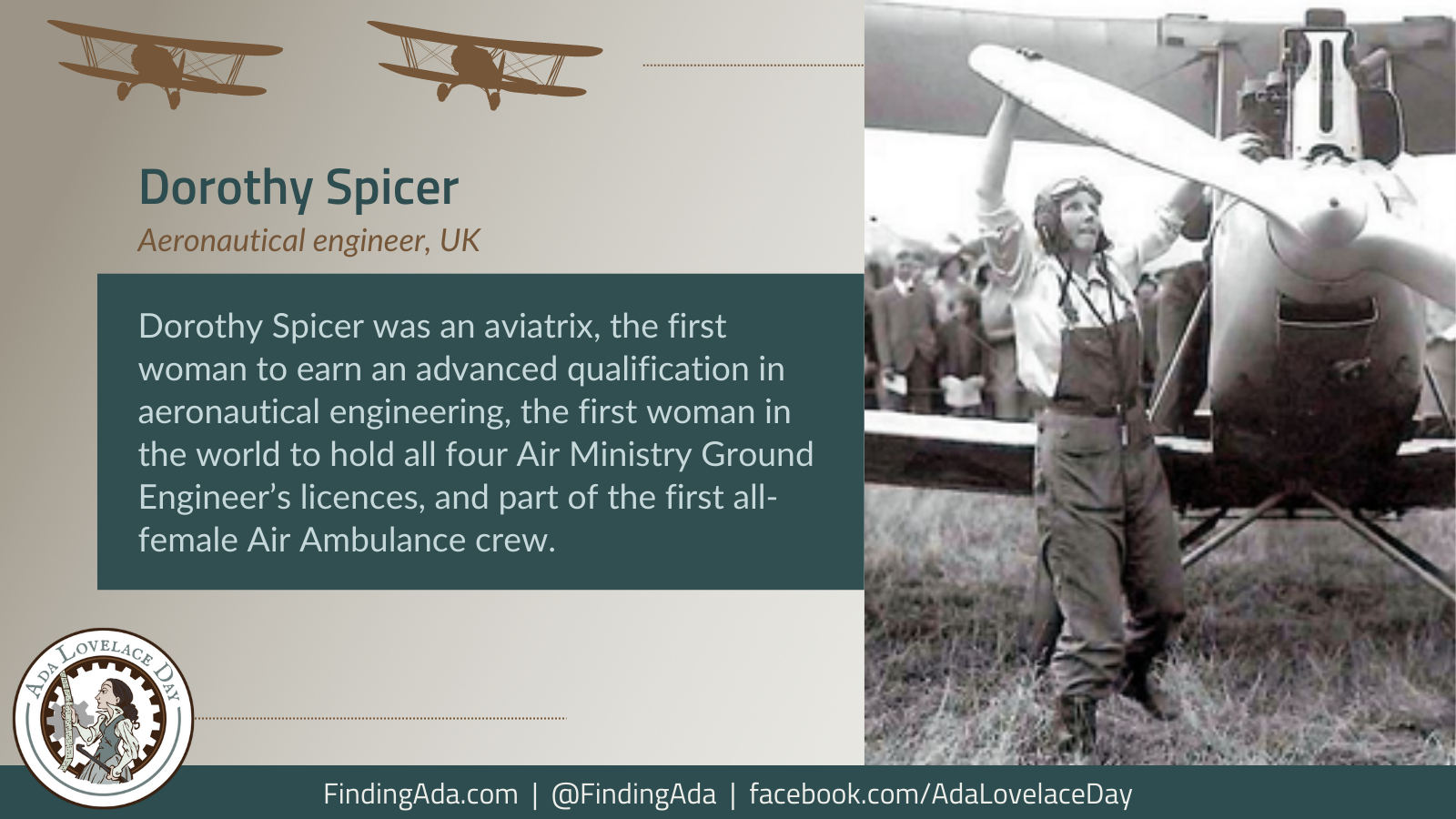
Dorothy Spicer
Dorothy Spicer was an aviatrix and the first woman to earn an advanced qualification in aeronautical engineering.
Born in 1908, Spicer learnt to fly in 1929, when she was in her very early 20s. She took lessons at the London Aeroplane Club at Stag Lane Aerodrome, where she met pilot Pauline Gower. They became friends and started a business before flying in the Crimson Fleet air circus and then the British Hospitals’ air pageant together.
Spicer joined the Women’s Engineering Society (WES) in 1932, and studied for her ‘B’ engineers licence. She couldn’t access formal courses because women were barred from training at technical schools. But she persuaded Saunders Roe, which built the Spartan Aircraft plane she and Gower flew, to let her do the practical and theoretical training at their workshop in Cowes on the Isle of Wight. She was the first woman in the world to attain her ‘B’ licence.
She was also only the second woman to earn a ‘C’ licence, for ground engineers, after Amy Johnson. In 1935, she studied at Napier Engineering in Action and Cirrus Hermes in Hull to become the first woman to earn a ‘D’ licence. That licence authorised her to inspect, pass out and repair engines and airframes, and qualified her to build aircraft, airframes and engines from scratch and to approve the materials needed.
By this point, she was the first woman in the world to hold all four Air Ministry Ground Engineer’s licences.
In 1934, Spicer and Gower became the first all-female Air Ambulance crew, flying Gower’s three-seater plane as part of the Surrey Red Cross Brigade. They were the first Red Cross Air Ambulance anywhere in the world, and their Commandant was Mrs Victor Bruce, née Mildred Petre.
Two years later, she became the chief engineer for British Empire Air Displays, a flying circus that toured the UK. In 1937, She presented a paper on the “Selection and Treatment of Steels for Aero-Engines” at the WES conference.
A year later, despite having married, she took a job with the Air Registration Board and became the first woman in the British Empire to receive a technical appointment in civil aviation. In 1940, she became an air observer and research assistant with the Royal Aircraft Establishment in Farnborough, where she worked on the development of new aircraft and aviation equipment.
She and her husband, Flight Lieutenant Richard Pearse, died on a commercial flight to Rio de Janeiro in 1946, when bad weather caused the plane they were on to crash into a mountain just ten miles from the airport. There were no survivors. She was just 38.
Spicer was a founding member of the Society of Licenced Aircraft Engineers, who created the Dorothy Spicer Memorial Award in her honour.
Further Reading

